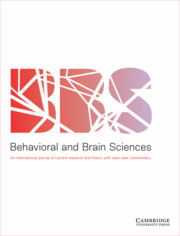Article contents
Unconscious influences on decision making: A critical review
Published online by Cambridge University Press: 24 January 2014
Abstract
To what extent do we know our own minds when making decisions? Variants of this question have preoccupied researchers in a wide range of domains, from mainstream experimental psychology (cognition, perception, social behavior) to cognitive neuroscience and behavioral economics. A pervasive view places a heavy explanatory burden on an intelligent cognitive unconscious, with many theories assigning causally effective roles to unconscious influences. This article presents a novel framework for evaluating these claims and reviews evidence from three major bodies of research in which unconscious factors have been studied: multiple-cue judgment, deliberation without attention, and decisions under uncertainty. Studies of priming (subliminal and primes-to-behavior) and the role of awareness in movement and perception (e.g., timing of willed actions, blindsight) are also given brief consideration. The review highlights that inadequate procedures for assessing awareness, failures to consider artifactual explanations of “landmark” results, and a tendency to uncritically accept conclusions that fit with our intuitions have all contributed to unconscious influences being ascribed inflated and erroneous explanatory power in theories of decision making. The review concludes by recommending that future research should focus on tasks in which participants' attention is diverted away from the experimenter's hypothesis, rather than the highly reflective tasks that are currently often employed.
Keywords
- Type
- Target Article
- Information
- Copyright
- Copyright © Cambridge University Press 2014
References
- 283
- Cited by





Target article
Degraded conditions: Confounds in the study of decision making
Related commentaries (1)
Unconscious influences on decision making: A critical review